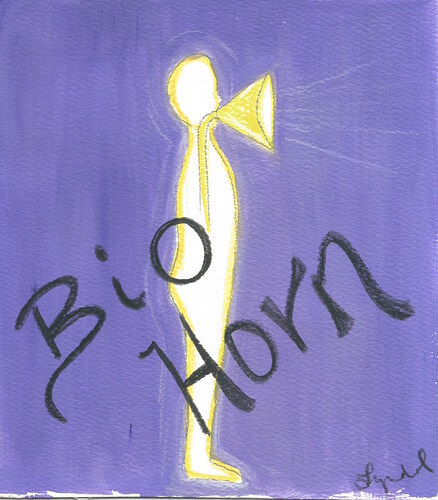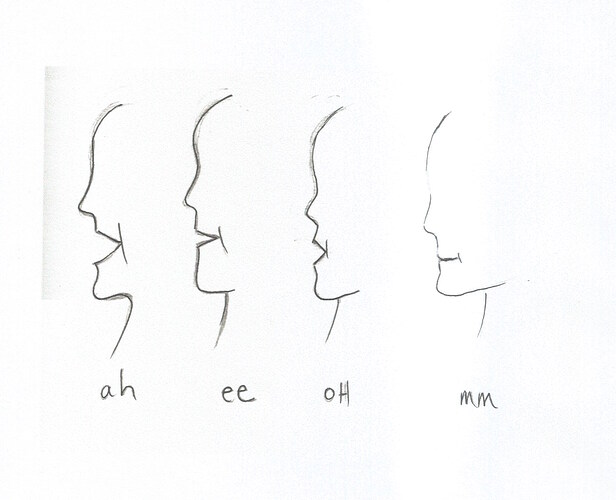Horn vs. Voice
I’ve run across quite a few hardcore jazz cats who think that the horn is a superior version of the human voice- in volume, range and more (I assume).
I can see where they are coming from, but I do not share this opinion if for no other reason than effective transmission of emotion and message. Though I’ll add… have you ever heard an opera singer in person? Or a full bodied soul voice live… two examples of a type of singing voice that has plenty of volume to spare. Their notes can cut thru the air like a japanese knife. So it seems more like a preference than a fact - as some have presented it.
However, I do find the comparison of voice to horn very valuable. When a singer thinks of the mechanisms of a horn and then applies it the body, it can be a good way to visualize and optimize their internal , biological instrument.
First Consideration – Breathwork
The first aspect is Breath – sending enough air through their bio horn and at the proper velocity to match pitch and create the appropriate volume, is a skill that both singers and horn players must master.
This is stage one, and I’ve outlined some starting exercises in a previous singer’s corner. So please read up there first.
If you already have, please keep an eye out for more to come, as it’s a skill we must continually work on as a singer (or horn player).
2nd Consideration – Mouth Shape
But let’s assume you have decent to great breath support going; the 2nd factor to consider is your mouthshape. It’s the opening to your horn – and if it’s distorted, or neglected (which is easy to do since we use it all day to talk, and don’t consciously pay much attention to it at all) than it will give a distorted impression to your note.
Pure Syllables
To work on this shape, vocal studies focus on using pure syllables and consciously optimizing the mouth shape to produce the crystal tone you are looking for in your notes. Here are the common ones used.
In my lessons, I commonly refer to these. I incorportate them when singing through melody lines for the first few times, before lyrics; As well as singing along with my piano skills (where applicable) and improvisation.
But I want to explain them a bit further here and invite you to spend a bit of time really noticing how you are shaping your mouth when you sing.
Something to keep in mind for all of these (Generally)
-
The more vertical your mouth opening, the better the tone. When it’s spread wide and horizontal, the tone tends to be less aesthetic.
-
Some words, and sounds have more of a natural horizontal spread, but you can learn to cheat them towards a more vertical shape for clearer sound in many situations.
-
For someone like me, from Texas, we are used to talking with wide spread mouths.
-
Different languages, accents, dialects have different mouth habits. So you’ll want to become aware of your particular habits and work hard to correct them when they are affecting your singing negatively.
More on these Common Mouth Syllables
Ah
Open mouth, wide, but with a dropped jaw. With jaw dropped, the mouth shape is most verical and it can be easy to get a pure sound with this one. Try experimenting by dropping your jaw super low, and/or immitating a proper british accent. (Think of Hayden’s for example:grinning:)
EE
This one has the most horizontal spread to it, so it can sound a bit twangy. You can work it so your mouth shape only goes as horizontal as it absolutely needs to (to created the ee sound), but then keep a bubble shape inside your actual mouth cave. I knew a student who worked for 3 months with this tone and it rang like a bell, far more than any other sound!
Oh
The mouth shape is a small o, but the inside of the mouth is huge… this creates a reverberation that can be controlled and honed to a level so precise your note create wind through the air (or at least it seems so). Please note, this is NOT the ew sound, which is very close. Keep a pure oh for now, as it can be easy to vascilate between the Oh and Ew sounds.
Mm
This is the easiest and best one – so actually start here. Mmm is a resonator… you should feel a buzz on your lips and even a little tickle in the nose - when this one is well placed.
That resonance is important to get to know as it can create beautiful sound waves that travel far and convey emotion well.
But there’s another important reason to work with this tone… it’s naturally very relaxing for humans to make this sound. Keeping the body relaxed, with little to no tensions is an important goal of singers. Our bodies often know exactly how to get the music out of us, but many get in the way by “trying to sing” which often means adding tension through controlling areas of our body that respond better to trust and flexibility in movement.
So using this Mmm sound can bring us back to a state of relaxation when we are getting tense or feeling nervous (such as in a performance). It can also help to build valuable muscle memory which in time creates the default habit of singing from an optimized and expansive place.
Exercises for Application
-
So my suggestions is to start with any scale and go very slowly and deliberately on each note.
-
Go up and down using each syllable, holding for 4-8 counts. You can start with mmm, then go thru them in any order.
-
Really get conscious on your mouth shape. Sing into a mirror if possible.
-
See how changing the shape affects the tone and start to find those positions in your mouth that create the sweet spot for each syllable.
-
You can also use the ranger finder exercise to run over each note, on a larger scale. Run thru it 4 different times, using a different syllable each time.
-
Figure out which is your favorite and then work even harder on the ones that seem weaker.
Comments and Questions Welcomed
If you have any questions, need further guidance or want to share your opinion/experiences, please don’t hesitate to write here.
Thanks and Happy Singing!

